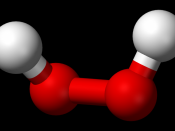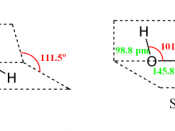The effect of substrate concentration on the rate of reaction of the enzyme catalyses.
Aim
To measure the rate of reaction by looking at the amount of oxygen given off when a yeast culture b is added to different concentrations of hydrogen peroxide
Background information
An enzyme is a biological catalyst. They speed up the rate of a reaction however they are not affected themselves whilst doing this, this is why they are catalysts. Enzymes are made to be specific, this means that they can have only one substrate that they will work on. Each enzyme has an active site that is where their own specific substrate molecule will fit. Enzymes all work best at an optimum temperature that is usually body temperature at 37C. If the temperature that the enzyme has to work at gets too high, normally 40C it will start to become denatured and therefore no longer work on its substrate as the active site has changed shape.
In addition, enzymes usually work best at an optimum pH level, this is normally seven because enzymes are proteins which are damaged by very acidic or very alkaline conditions.
Most reactions work better at higher temperatures, this is because molecules move around much quicker. This makes the molecules have more chance to collide with the substrate. With more collisions, there is more chance of a reaction-taking place. This makes the rate of reaction faster. At 40C the enzyme starts to be damaged, this slows the reaction and by around 60C the enzyme will be completely destroyed.
When these bonds are broken, the enzyme, along with the active site, is deformed, thus deactivating the enzyme. This is know as a denatured enzyme
The lock and key theory
Emil Fischer originated the lock and key theory in 1894. It states...


